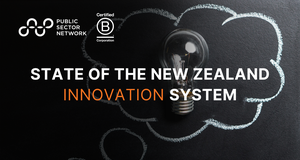As a technology #Artificial Intelligence (AI) is one that has fascinated experts and laymen alike for years now. Despite knowing that I should know better, whenever I read or hear ‘AI’ thoughts of Skynet and androids and intelligent sentinel squid-like machines coming to take over the world (!) come unbidden into my mind.
For so long #AI was simply a buzzword, something reserved for entertainment purposes with limited practical applications; at least none that society actually wanted.
All of that is now changing.
Over the last decade there have been immense breakthroughs in the field of machine learning and deep learning. These concepts have allowed machines to process and analyse information themselves in a very sophisticated manner. And don't even get me started on the #ChatGPT revolution - but let's leave that bit alone for now and focus more on the less... transactional aspects of AI.
Over at KPMG they describe AI as a combination of three distinct fields: classic AI, which includes machine learning and deep learning; automation; and advanced analytics. The ability to properly leverage data, analytics and AI can truly empower transformation, but this is not an easy journey for companies to undertake. AI still is not something that can be purchased – it must be built.
AI is, at its core, the science of simulating human intelligence by machines. The focus is on making computers human-like, not making computers human. Done right, AI won’t eliminate jobs; it will upgrade them. By removing some of the repetitive or mundane tasks associated with our work, it will give us more freedom to apply creativity and human judgement.
The Time Is Now
Due to faster central processing units that are powering deep learning, AI is becoming ever more prominent in our daily lives. The proliferation of big data is another reason why more companies are able to train AI through deep learning.
Despite initial implementation challenges, AI offers huge opportunity and is already transforming many areas within the private sector, but its enormous disruptive potential won’t stop there. The societal and economic innovations created by these technologies will soon have a very real presence in every industry — including the public sector.
According to a recent report by the CSIRO, the benefits of AI are estimated to be worth AU$22.17 trillion to the global economy by 2030 additionally, AI has the potential to double economic growth rates and increase labour productivity by up to 40%.
AI isn’t a technology of the future — it’s here now and can’t be put off until tomorrow. The sooner that government organisations embrace AI, the sooner they will become more cost efficient and increase citizen satisfaction.
While AI has a number of benefits for business, and for humanity in general – everything from reliable weather forecasting to the elimination of tedious and repetitive tasks, sometimes truly understanding the practical opportunities of AI, and how these can be deployed within your department remain far-fetched and unclear.
To help bridge the gap between robots taking over the world and the more relevant, timely and tangible opportunities AI provides we take a look at three public sector use cases from the ATO, Transport for NSW and Services Australia.
AI in Action
Australian Taxation Office
Looking to better meet the demands of citizens by delivering faster, more efficient, 24/7 access to information the Australian Taxation Office (ATO) introduced virtual assistant Alex back in 2016.
Aligning with the ATO’s ‘Digital by Default’ strategy Alex was launched to assist Australia’s with personal tax queries. The bot provides tailored responses to customer queries using natural language understanding, conversational dialogue and advanced resolution techniques, to answer hundreds of commonly asked questions across a range of categories.
Alex boasts an 80% first contact resolution rate which allows contact centre agents to spend more time managing complex requests.
In the first nine months of deployment more than 950,000 conversations took place with Alex, with the virtual assistant easily scaling capabilities between July and October with Aussies focused on submitting their tax returns.
Transport for New South Wales
The CSIRO’s Data61 has partnered with Transport for New South Wales (TfNSW) to help improve the efficiency and effectiveness of transport systems.
Together Data61 and TfNSW have developed a prototype AI engine for congestion management as part of the Traffic Congestion Management Program. The engine makes it possible to model the impact of network changes or disruptions and then issue automatic journey planning information for transport operators and travellers.
By using the information both organisations have accrued, including real-time, historical, and passenger transport data the self-learning AI engine trawls through data from road network detectors, Opal, GPS devices, traffic signals and buses, and aims to bring intelligence into managing next-generation congestion, with the key idea being that instead of being reactive to events in the transport network, they can be proactive.
Services Australia
Realising the opportunity around, and growing prevalence of AI technologies Services Australia back in 2018 opened an Augmented Intelligence Centre of Excellence in Canberra to Harnessing the power of augmented intelligence to help deliver faster and better government services.
Harnessing the power of augmented intelligence to help deliver faster and better government services will be the focus of a new AI Centre of Excellence operated by the Department of Human Services.
The Canberra-based centre, which opened in late 2018 – making Services Australia an early public sector AI adopter. Services Australia’s earliest foray into AI came in the form of Sam, Oliver and Charles – virtual assistance who answered over 2 million customer calls in the first 12 months. These intelligent bots reduce the need for customers to contact Services Australia for simple queries, saving considerable time and reducing demand on busy phone lines.




















